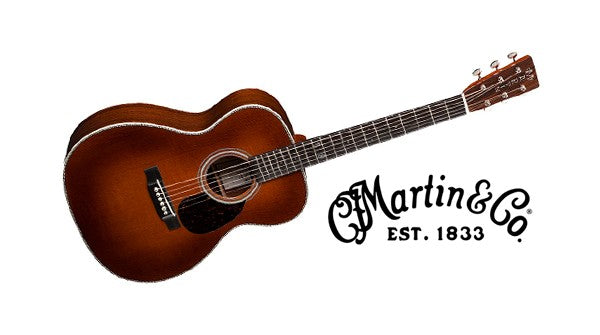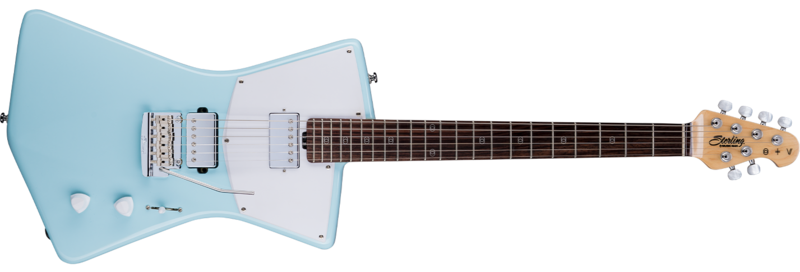Your Cart is Empty
The Ultimate Guide to the Different Types of Acoustic Guitar Strings
August 02, 2018 4 min read

Guitar strings are more complex than one might think. If you've got to restring your guitar, check out this guide to acoustic guitar strings. We'll walk you through all the different types.
Whether you play an electric guitar or an acoustic guitar, it will, at some point, need to have its strings changed. When this point comes, it's important that you choose strings which are equipped to get the job done.
Though many think all guitar strings to be the same, the fact of the matter is that they are actually all quite different. Acoustic strings, in particular, come in a wide variety of sizes, styles, and materials. Before attempting to buy them, you need to have done your research.
Looking to learn more about the different types of acoustic guitar strings? This guide has everything that you need to know.
String Materials
When searching for acoustic strings, you will come across three primary materials. These materials include brass-plated steel, bronze-plated steel, and nylon. Let's review the specifics of these materials below.
Nylon
Nylon strings are most typically used on classical guitars. A classical guitar is a specific type of acoustic guitar which is generally used to play complex orchestral music. It has a soft, mellow sound which differs substantially from the sound you'll get with more common acoustic guitars.
One of the reasons that classical guitars sound so mellow is because they're equipped with nylon strings. Nylon strings produce a quieter, more bass-laden sound than what you'll get from steel strings. While you can put nylon strings on a standard acoustic guitar, the practice is not common.
Steel String (Brass-plated)
What you'll typically see on standard acoustic guitars are steel strings. In general, there are two types of steel strings for acoustic guitars: brass-plated and bronze-plated. First, we'll discuss brass-plated steel strings.
Sometimes called 80/20 bronze strings, they have a treble-laden and cutting tone. Because of this, they work best on big acoustic guitars which can counter-balance them with bass. These guitars include dreadnought guitars, jumbo guitars, and OM guitars.
Steel String (Bronze-plated)
Bronze-plated steel strings, on the other hand, have a much more mellow and bass-laden tone. While they're not as loud or ear-catching as brass-plated strings, they are very pleasant to listen to.
If you play a lot of finger-style guitar, it's recommended that you use bronze-plated strings. They sound great on acoustic guitars of all sizes.
String Components
To better understand what exactly you're getting when you buy acoustic strings, you must understand the strings' different components.
Whereas nylon strings are made out of pure nylon, steel strings contain three major components. These include the core, the winding, and the coating. Below, we'll delve into the specifics of these components.
Core
The core of an acoustic guitar string is generally made out of steel. It typically comes in one of two shapes: round and hex. Whereas round cores produce a more mellow, consistent, and bass-laden tone, hex cores produce a more chiming, loud, and erratic tone.
Winding
The winding of an acoustic guitar string is the portion of the guitar string which wraps around its core. Typically made out of bronze or brass, a winding will be shaped in a specific way so as to produce a specific tone.
The most common type of winding is round wound. This winding will produce a sound which is bright, yet restrained.
Another type of winding is flatwound. Flatwound strings are, quite literally, flat, and produce a dingy, dark tone. They're most commonly used by jazz guitarists.
The last type of winding is halfwound. In terms of tone, halfwound strings fall somewhere between flatwound and roundwound strings. While they're used by some guitarists, they are much less popular than roundwounds.
Coating
In some cases, a guitar string will contain a polymer coating. This coating is put in place for durability purposes, fighting against corrosion, and typically possessing double the life of non-coated strings.
However, it should be noted that coating will affect both the sound and price of strings. These strings are not only more mellow-sounding than non-coated strings, they're more expensive as well.
Gauge
When novice guitar players buy new strings, they very often overlook the gauges of said strings. What these novice players don't understand is that the gauges of the guitar strings that they're using have a huge impact on their overall sound.
As far as acoustic strings go, there are 5 typical types of gauges. These include 10s, 11s, 12s, 13s, and 14s. Below, we'll discuss the characteristics of each.
10s
Also known as extra light strings, 10s are typically the lightest gauged acoustic guitar strings that you're going to find. Because they're so light, they produce a bright and punchy tone. Typically used on small-sized guitars, they generally won't produce a welcoming sound on large models.
11s
Often referred to as custom light strings, 11s are most typically used on parlor guitars and other small styles of guitars. Like 10s, they pack a bright, punchy tone which will cut through accompanying instruments.
11s are a great option for beginners, as they are easy to push down and bend. When used on big guitars, they can provide quite a pleasing lead tone.
12s
Also known as light strings, 12s are a suitable option for guitars of all sizes. Not only are the weak enough to accommodate the limited strength of small parlor guitars, they're strong enough to accommodate the cavernous size of big dreadnought guitars. If you're not sure of which gauge to buy, this is a great option.
13s
Often called medium gauged strings, 13s provide a resonating, bass-laden tone which goes great with big guitars. Whether you're accompanying yourself, playing rhythm, or just playing instrumentals, these strings are a great option.
14s
Typically, the thickest gauged strings you'll come across for acoustic guitars are 14s or heavy gauged strings. These strings are designed to accommodate large guitars such as dreadnoughts and auditorium guitars. Producing a big, bassy sound, they will resonate throughout an entire room with ease.
Looking for Top-notch Acoustic Guitar Strings?
Are you on the lookout for top-notch acoustic guitar strings? If so, we here at Adirondack Guitars have exactly what you're looking for.
With a variety of different brands in stock -- including Ernie Ball, Martin, D'Addario, and more -- we have every type of guitar string you could ever imagine.
Leave a comment
Comments will be approved before showing up.
Also in Adirondack Guitar News and Blog
Browse Our Store
Recent Articles
- Left Handed Guitarists Who Learned to Play Right Handed July 13, 2021
- The History and Importance of the Martin 28 Style July 13, 2021
- Adirondack Guitar Profiles: St. Vincent July 13, 2021
- Adirondack Guitar Profiles: John Petrucci May 05, 2021
- How to Turn Your Music Skills into a Career March 30, 2021



